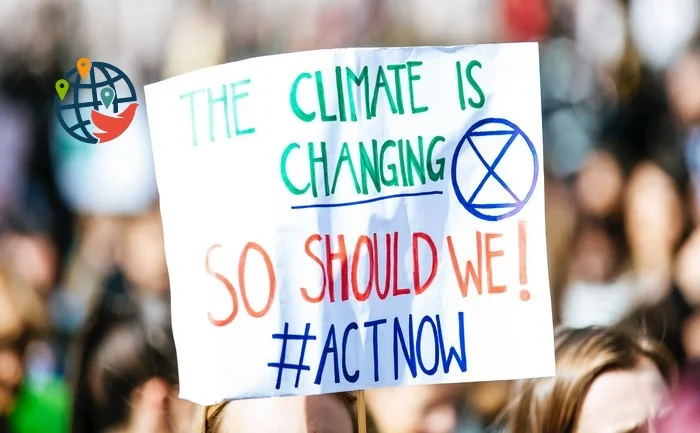How is Canada preparing for new heat waves and other extreme weather events?

Climatologists declare that the time has come for the most decisive action to protect against catastrophic natural phenomena.
As large parts of the western U.S. and central Canada continue to struggle with severe heat waves, climate and environmental safety experts are calling on Canadian governments and communities at all levels to redouble their efforts to mitigate what's happening. And they also talk about the need to adapt to the inevitable effects of climate change.
Recall that the B.C. coroner's office recorded more than 700 deaths during the abnormal heat wave in its province a week ago — and that's three times more than what normally happens during the same time period.
Dozens of heat records were broken across the country in early June as Canada was hit by the worst heat wave on record. And more than 60 records were set in just one day in British Columbia alone. The small rural community of Lytton (which suffered terribly from a catastrophic forest fire, with some of its residents burned alive), recorded a new temperature high several times, with the highest reaching 49.6 °C. Now, as a wave of extreme heat passes through central Canada, fires are starting in Manitoba, Saskatchewan and Alberta. Forests are also burning in the Pacific Northwest of the USA.
What do climate scientists say?
Ian Mauro, executive director of the Prairie Climate Centre at the University of Winnipeg, said extreme heat waves could potentially recur every 5-10 years once global warming crosses a certain threshold. This is expected to happen in the 2040s.
Mauro also added: "We now live in an era where our predictions about the future are coming to fruition in real time, and the intense heat waves that Canada has faced this year are evidence that climate change is actually happening and affecting our society and environment."
William Cheung, professor and director of the Institute of Oceans and Fisheries, believes that while scientists cannot predict the date of extreme climate change as accurately as possible, they are confident that such climate change will occur more frequently and with greater intensity:
"This means we need to act urgently to address the damaging climate impact of carbon dioxide emissions into the atmosphere. There is already too much gas and it is only increasing the risk of extreme climate change."
According to Mauro, humanity is now beginning to reap the results of years of anthropogenic pollution and greenhouse gas emissions. And now is simply the ideal moment for government, industry and society as a whole to do what is necessary to cope with the rapidly changing climate.
Adapting to the new environment
Ian Mauro also believes that it is necessary not only to start reducing harmful emissions but also to launch a credible, systematic and resourced adaptation strategy.
Adaptation to climate change in Canada can happen differently depending on the regions. Mauro suggests that remote northern communities, which depend entirely on diesel fuel to power their electricity grids, could make the switch to off-grid energy. And British Columbia, where hydropower is well developed, could produce even more renewable energy.
At 734-In a recent 734-page report, Natural Resources Canada says the country is steadily shifting precipitation patterns, rising temperatures and sea levels. And this trend will not only continue in the coming decades, but intensify.
Changing weather patterns are strongly affecting all aspects of life, from food security and trade to immigration. And if Canada is not prepared for these changes, the consequences will be catastrophic. The report stresses that the coming changes require a complete overhaul of Canada's infrastructure, from roads to sewers and hydro pipelines, which are at risk. After all, the country's entire infrastructure network was previously designed to function in a cold northern climate.
Ryan Mackie of the BCIT Centre for Eco-Cities noted that Canadian cities and communities will now have to strengthen their vulnerabilities. For example, to withstand the scorching heat, Mackie recommends building buildings that require less electricity to stay cool in summer and keep warm in winter.
McKee also noted that "we can start changing the master plans of cities to take into account the warming climate. More trees should be planted in cities to create street shading from the sun's rays. Wetlands need to be reclaimed so that they can absorb excess water.
In addition, Canada needs to change its food security policy as soon as possible, bearing in mind that most of the country's food is imported. The agricultural sector also needs to adapt, given that a too hot or too cold spring can have a bad impact on crops. In addition, the necessary amount of potable water should always be in stock.
Helping people at risk
Experts are also seriously concerned about how the most vulnerable Canadian citizens will survive such extreme weather conditions.
Mauro noted the following: "We know that heat waves cause social vulnerability. Some sections of the population are more protected, while others are much less protected.
The elderly population is the most affected by the heat, as many elderly people live in isolation and do not have time to ask for help. People with poor health are also at great risk. All cities should have more mudguards and shade shelters.





























